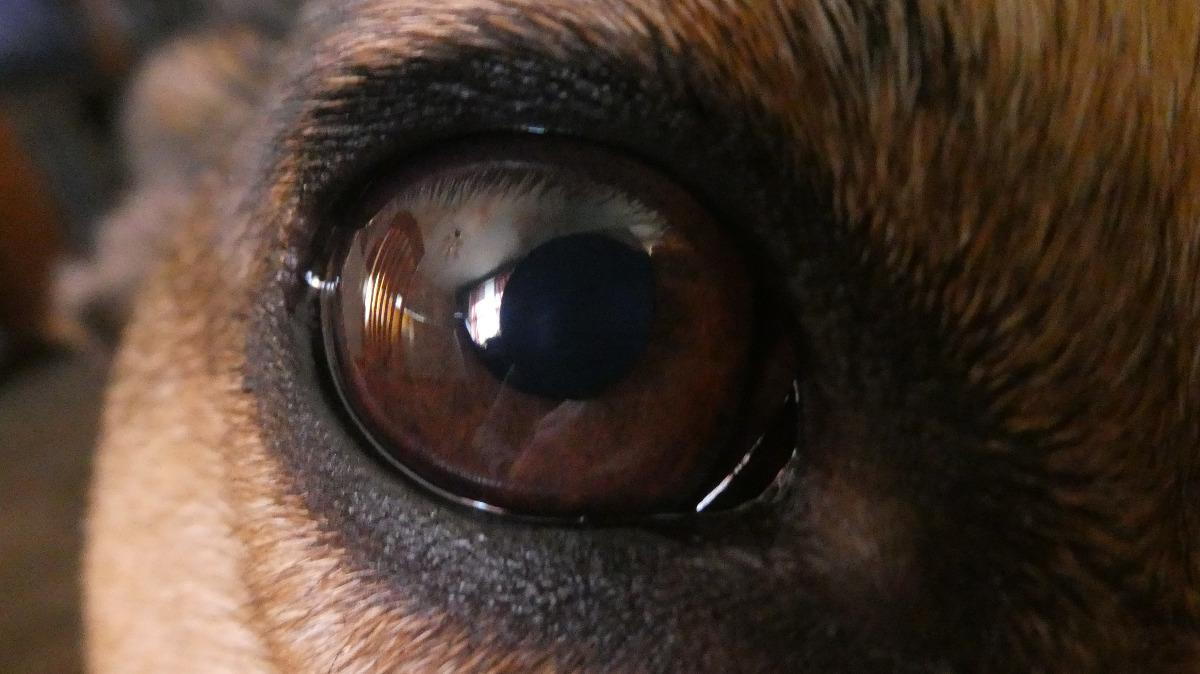Do Dogs See in Black and White? Vision Myths in Dogs and Cats

- posted: Feb. 23, 2020
Do Dogs See in Black and White? Vision Myths in Dogs and Cats
Contrary to popular belief, dogs don’t just see black and white. They do see some colors. But how does their vision differ from ours? And, what about cats? Do they see in color? Can they really see in the dark? Let’s explore how cats and dogs see the world.
Before we talk about dogs and cats, how do humans see colors? Going waaay back to high school biology, people have light and motion receptors called “rods” and color receptors called “cones” on the back of the eye called the retina. Humans have 3 types of cones which detect color combinations of red, green and blue. Dogs and cats have rods and cones, too, but they differ a bit from our own.
Dogs have two types of cones which detect only blue and yellow colors and they have more rods in their retinas than people do, so they can see better in dim light. Dogs see shades of browns, yellows, greys and blues. Colors are more muted for our canine companions than what we see. And, while red and orange seem to be the most popular colors for dog toys, dogs actually don’t see red! Red looks black or brown to dogs. If you want a toy that’s visually appealing to your pooch, look for blue, purple or yellow. Dogs tend to have relatively good near and far vision and, because they have more rods than humans, they are more apt to see motion, even at a long distance away and they have better peripheral and night vision than we do.
Cats seem to have a similar color range to that of dogs, seeing blues, greys and yellows. Cats do not see red or green, making their vision similar to that of a person who is red-green color blind. Cats are also near-sighted, seeing things crisply but only up to a distance of about 20 feet away. Our feline friends also have a light-catching organ on the back of their eye called the tapetum. It’s what causes the eyes to appear to glow when a camera flash or other light hits the back of the eye. This shiny band of cells collects all available light and focuses it on the retina where cats also have a large number of rods, so cats can see well in the dark (though neither dogs, cats nor humans can see in the total absence of light such as in a cave). Dogs have a tapetum, too, but don’t see quite as well in the dark as cats as they have fewer rods than cats.
Hopefully, this explains a little more about how our furry companions see their world and why dogs may miss that red toy in the green grass or why your cat can prowl around the house at night without knocking things over.
Dogs and cats can lose their vision or have changes to their vision for various reasons including cataract formation, retinal detachment, glaucoma and many other problems that affect the eyes. If your dog or cat appears to have changes to his or her vision, please have your pet checked by a veterinarian.
This blog brought to you by the Patton Veterinary Hospital serving Red Lion York and the surrounding communities.
https://vcahospitals.com/know-your-pet/do-dogs-seecolor
https://www.psychologytoday.com/us/blog/canine-corner/200810/can-dogs-see-colors
https://www.petfinder.com/cats/cat-behavior-and-training/what-do-dogs-and-cats-see/
Location
Patton Veterinary Hospital
425 E Broadway
Red Lion, PA 17356
